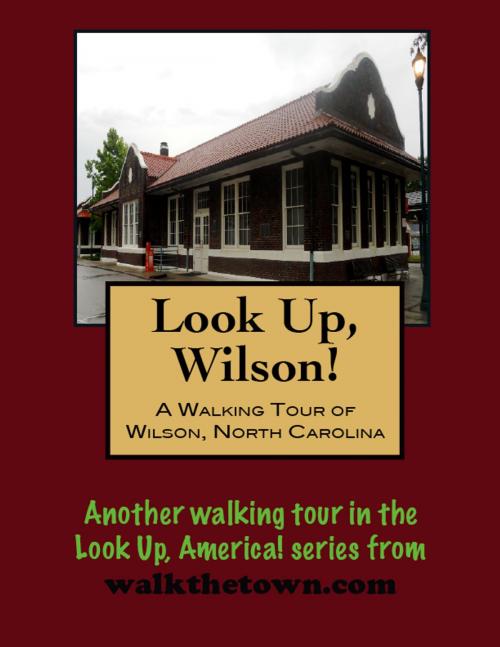| Author: | Doug Gelbert | ISBN: | 9781458141262 |
| Publisher: | Doug Gelbert | Publication: | June 16, 2011 |
| Imprint: | Smashwords Edition | Language: | English |
| Author: | Doug Gelbert |
| ISBN: | 9781458141262 |
| Publisher: | Doug Gelbert |
| Publication: | June 16, 2011 |
| Imprint: | Smashwords Edition |
| Language: | English |
There is no better way to see America than on foot. And there is no better way to appreciate what you are looking at than with a walking tour. Whether you are preparing for a road trip or just out to look at your own town in a new way, a downloadable walking tour is ready to explore when you are.
Each walking tour describes historical and architectural landmarks and provides pictures to help out when those pesky street addresses are missing. Every tour also includes a quick primer on identifying architectural styles seen on American streets.
Late in 1802 the Baptist Society purchased an acre of land on which they erected a small church. The tiny community that grew up nearby came to be known as Hickory Grove. In 1839 as the new railroad pushed out from Wilmington towards Weldon a station was built where the rails passed here that was named Toisnot. Gradually the road between Toisnot and Hickory Grove acquired residences and businesses. In the 1848-49 session of the North Carolina General Assembly a bill was introduced to "incorporate Toisnot Depot and Hickory Grove in the County of Edgecombe into a town by the name of Wilson." The name came from Colonel Louis Dicken Wilson, an area politician who two years prior had taken leave of the North Carolina Senate to command troops in the War with Mexico, contracted yellow fever and died at the age of 58. In 1855 Wilson County was hacked out of Edgecombe, Nash, Johnston and Wayne counties.
Wilson was an agricultural county, tar and turpentine at first and then cotton mostly. There was some tobacco grown - about 2,000 pounds in 1870 passing through town and almost 9,000 pounds in 1880. After that the first tobacco market opened in town and the total passed 1.5 million pounds in 1890. The tobacco boom was on and by 1919 Wilson surpassed Danville, Virginia as the world's largest market for flue-cured tobacco. By the 1930s the town's commodious one-story warehouses were handling close to 100,000,000 pounds of bright leaf tobacco in a season.
The tobacco money made its way to Wilson's streets in the form of civic and commercial and residential buildings. The town has been active in historic preservation and many of the properties from those go-go days remain. Our walking tour will begin at the historic train depot and we'll keep an eye out for leafy oaks as Wilson has been designated a "Tree City, USA" for more than two decades and earned the nickname, "City of Beautiful Trees..."
There is no better way to see America than on foot. And there is no better way to appreciate what you are looking at than with a walking tour. Whether you are preparing for a road trip or just out to look at your own town in a new way, a downloadable walking tour is ready to explore when you are.
Each walking tour describes historical and architectural landmarks and provides pictures to help out when those pesky street addresses are missing. Every tour also includes a quick primer on identifying architectural styles seen on American streets.
Late in 1802 the Baptist Society purchased an acre of land on which they erected a small church. The tiny community that grew up nearby came to be known as Hickory Grove. In 1839 as the new railroad pushed out from Wilmington towards Weldon a station was built where the rails passed here that was named Toisnot. Gradually the road between Toisnot and Hickory Grove acquired residences and businesses. In the 1848-49 session of the North Carolina General Assembly a bill was introduced to "incorporate Toisnot Depot and Hickory Grove in the County of Edgecombe into a town by the name of Wilson." The name came from Colonel Louis Dicken Wilson, an area politician who two years prior had taken leave of the North Carolina Senate to command troops in the War with Mexico, contracted yellow fever and died at the age of 58. In 1855 Wilson County was hacked out of Edgecombe, Nash, Johnston and Wayne counties.
Wilson was an agricultural county, tar and turpentine at first and then cotton mostly. There was some tobacco grown - about 2,000 pounds in 1870 passing through town and almost 9,000 pounds in 1880. After that the first tobacco market opened in town and the total passed 1.5 million pounds in 1890. The tobacco boom was on and by 1919 Wilson surpassed Danville, Virginia as the world's largest market for flue-cured tobacco. By the 1930s the town's commodious one-story warehouses were handling close to 100,000,000 pounds of bright leaf tobacco in a season.
The tobacco money made its way to Wilson's streets in the form of civic and commercial and residential buildings. The town has been active in historic preservation and many of the properties from those go-go days remain. Our walking tour will begin at the historic train depot and we'll keep an eye out for leafy oaks as Wilson has been designated a "Tree City, USA" for more than two decades and earned the nickname, "City of Beautiful Trees..."















